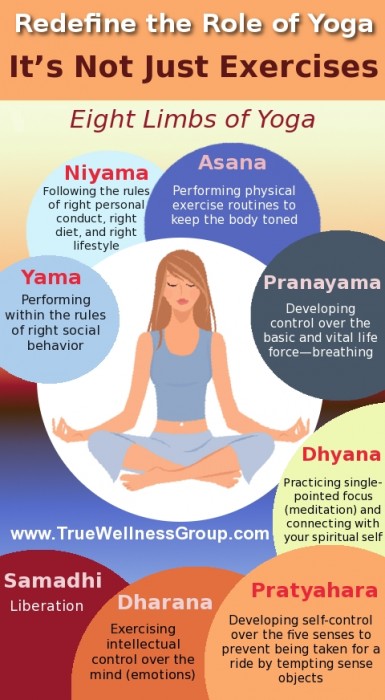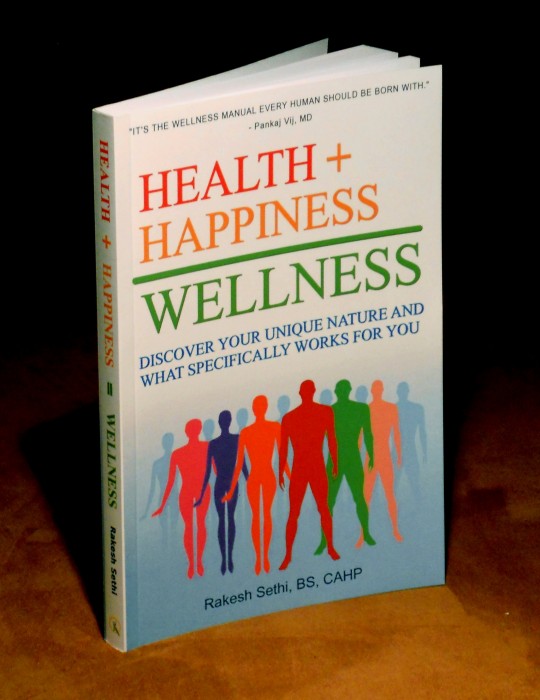Archive for the ‘Yoga and Meditation’ Category
Ashtanga Yoga: What is It and its Role in our Wellness
Did you know that yoga is not just a series of different physical exercises? Of course, it is that, but “Health+Happiness=Wellness” book describes it is much more when it comes to promoting health in the body and mind. The word yoga comes from Sanskrit and means “to unite.” But what is it uniting? It is uniting the spiritual, intellectual, emotional, and physical components of you for one single purpose. In our case, it is wellness! You may have heard of another purpose of yoga which is self-realization. Although I will touch upon many aspects that are fundamental to reach self-realization, my focus in this book is to help you reach and maintain wellness.
Yoga is an integral approach made of eight limbs (Ashtanga) working together in harmony for a single purpose of promoting wellness in you. Let’s go through what is Ashtanga Yoga quickly:
Can you imagine a life filled with wrong personal and social conduct, ruled by the five senses, and only guided by the emotions? Can you imagine this life producing peace, health, and happiness? You cannot! It is not possible. The emotions are a good servant but not a good master. The intellect is the master and must take charge. The following analogy out of “Health+Happiness=Wellness” book illustrates this relationship beautifully:
Imagine your body as a chariot, your intellect as a chariot driver, your mind as the reins, your five senses as the five horses drawing the chariot, and your desires as the roads you travel on. Your intellect must at all times be in control of the reins (mind) and direct the horses (senses) to keep the chariot on the right roads (desires) for creating wellness. Otherwise, five horses (your five senses) running wild and out of control would drive the chariot (body) on the wrong roads, creating disease and unhappiness.
Try to understand that yoga is more than just physical exercises. When you practice all eight limbs of yoga, including right thoughts, words, actions, social behavior, physical exercises, self-control of vital life forces, and self-control of mind with vigilant intellect, then you unite your spiritual, intellectual, emotional, and physical components all behind one single purpose, and that is wellness!
Read in “Health+Happiness=Wellness” book what does being healthy really means, why you are your first doctor, what makes you different, and how to design your personalized wellness plan according to your unique body and mind. Discover this and much more in this book. You will change your approach to health and wellness forever.
Read More...
How to Realize Benefits of Meditation in the Real World? Part 2
In part one of meditation article series, you discovered what is the true purpose of meditation. Here you will find out how to realize benefits of meditation in the real world. First we must understand how our body, mind, & intellect work. While body can do multiple tasks, the mind can only do one task at one time. When our mind gets involved in performing multiple tasks it gets tired easily & the quality of each action suffers. Which in turn leads to uncertainty, uncertainty leads to increase in anxiety, and anxious mind creates restlessness ultimately leading to stress.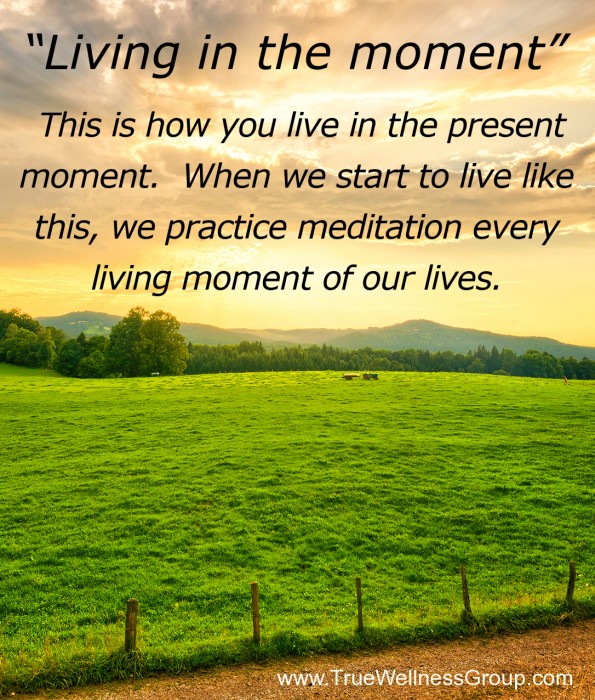
Now this is where we realize the benefits of meditation practice. Just as in during meditation in room alone, we used our intellect to keep the mind on one & one thing alone, we do the same thing here. Our intellect must always keep strict observation over our mind & prevent the mind from wandering off into past or future and taking on multiple tasks. By staying focused on the one task at the present moment and completing it gives us great satisfaction; then completing five tasks with uncertainty in mind, which ultimately leads to do-over & stress. You must have heard of “living in the moment”. Well, my friends, this is how you live in the present moment. When we start to live like this, we practice meditation every living moment of our lives.
We discussed stress created due to mind involved in multiple tasks. Another source of stress is mind living in conflict. Often conflicts create a sea of emotions in the mind since people’s egos are involved. Therefore, here it becomes extremely important that intellect over sees action or actions that will resolve the conflict without creating any additional conflicts. Here again we realize the benefits of meditation. Using meditation technique, the intellect must use the mind as a field on which various different resolution action scenarios can be played out. While playing out these scenarios, intellect must keep emotions, egos and selfishness in check. The mind focuses on an action that resolves a conflict without creating any additional ones. This is a technique for conflict resolution and to avoid any potential conflicts.
So far we have been discussing “outward” benefits of meditation. If you are comfortable here, it is absolutely fine. But there are also an “inward” benefits of meditation. This inward journey is very subtle, must be taken seriously, and only after one is at peace with all external matters. Otherwise it is difficult to stay with it, and if one becomes frustrated, one should immediately step back from this type of meditation practice and take up again later at an appropriate time.
Imagine if You Tried These Simple Meditation Techniques
Imagine benefits of meditation if you were to start using meditation techniques in your everyday life situations. In one sentence your stress will decrease and success will increase. You will have more control over your life. You will avoid creating excessive stress from conflicts at home & at work, conflicts in relationships, and problems with health. Stress and mind in conflict can become a root cause of a disease. By practicing regularly and daily, you could avoid any future potential health problems and create true wellness.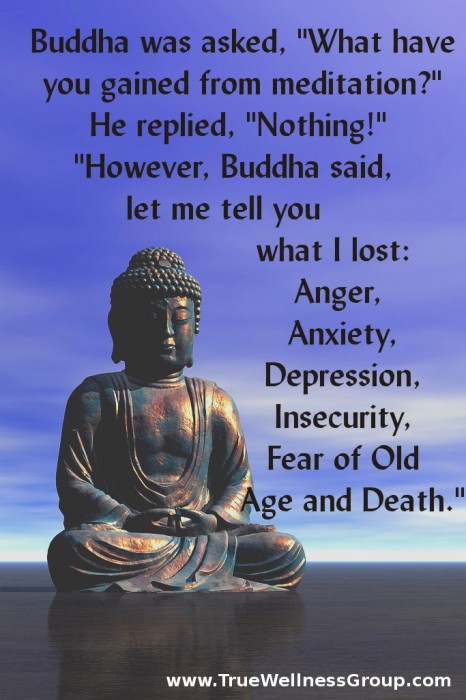
A mind living in conflict cannot meditate. How can you know peace without meditation? How can you know joy without peace? So if your goal is to live in peace and experience joy in your life, you must give these techniques a serious try.
Summary
In nut shell, we practice meditation in our part time only to put meditation into practice full time all day to realize benefits of meditation in all of our other affairs.
If you liked the benefits of this article then the biggest compliment you can give is by sharing its benefits with others.
Be Well!
Rakesh Sethi
Share your comments, thoughts and suggestions below. I appreciate your time & will take the time to read every single one!
Read More...
Is Ayurveda and Yoga a Religion or Science?
Every once in a while I come across someone who rejects the scientific medical system of Ayurveda and Yoga on the basis of its origin in India. Their reason- Hindus came up with Ayurveda and Yoga and follow it, and so by following mind-body wellness suggestions from Ayurveda and Yoga will “pollute” other religious believes. If you believe “will pollute” to be absolutely true then that is the truth for you. However, if you would like to know the roots and practice of this science, please read on and then make up your mind.
1. Coming from Sanskrit words, the ‘Ayur’ means life and ‘Veda’ means science. The word Ayurveda means ‘Science of Life’. 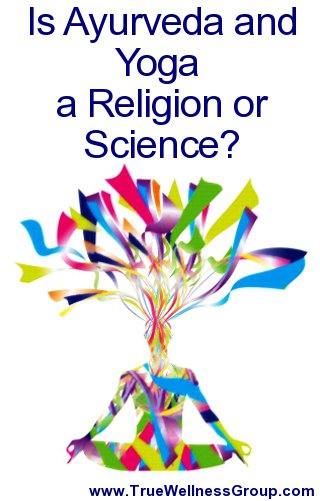 2. The word ‘Yoga’ also comes from Sanskrit and means “to unite”. So what is it uniting? It is a methodology of uniting spiritual, intellectual, emotional, and physical components of you for one single purpose of promoting health, wellness, and peace. Spiritual component is always regarded as pure consciousness. It is your choice to color it with any faith or religion that works for you.
2. The word ‘Yoga’ also comes from Sanskrit and means “to unite”. So what is it uniting? It is a methodology of uniting spiritual, intellectual, emotional, and physical components of you for one single purpose of promoting health, wellness, and peace. Spiritual component is always regarded as pure consciousness. It is your choice to color it with any faith or religion that works for you.
3. Vedic culture practiced this science thousands of years ago even before Hinduism was formed.
For more than 5,000 years this science of life has been practiced in India. Since majority of people in India are Hindus, it is easy to associate this with Hinduism. Incidentally, in India Hindus are NOT required to practice Ayurveda and Yoga. It is a free personal choice of diet and lifestyle for promoting health and wellness.
The practice of Ayurveda and Yoga has been working in disease prevention and healing for thousands of years. This ancient medical system is based on natural scientific laws of nature. Natural laws govern all cycles in nature. Since we are part of nature, they also govern our cycles. If we move with scientific understanding in harmony with those cycles we create and enjoy wellness and if we move against, we create dis-ease and suffer. Free download a Basic Ayurveda mini-course.
The evidence from research in mind-body health connections in modern science is corroborating with the approach of Ayurvedic medical system that takes into account the whole individual’s mind, body, and spirit to build immunity (preventing diseases) and promote wellness. In fact there are many other areas where the conventional medicine discoveries map right on with the Ayurvedic medicine. Example of one such discovery- Are You at Higher Risk for Coronary Heart Disease– New Ways to Check?
Just because the practice of Ayurveda and Yoga originated in India, it is not reserved only for Hindus. The whole world can benefit from it. Similarly, the medical practice discoveries made in the west are not just reserved for Christians. The whole world can benefit from them.
The focus here needs to be on the scientific natural laws. Just like the statements, ‘you reap what you sow, every action has an equal and opposite reaction, and law of karma’ are true not because some famous scientist or popular religion says so. It is because the statements represent the same law of nature even though the statements are from different sources. Carefully analyze and you will find natural laws are perennial and hold true on their own merit, regardless of whom or where they originated. Be Well!
“Doing meditation” Image courtesy of Pixtawan at FreeDigitalPhotos.net
Read More...
What is Meditation and It’s Purpose? Part 1
Every day the bombardment of life’s responsibilities crowd our daily thoughts. Constant conversation about what we “have to do” and “should be doing” plague our minds. The chatter seems endless as does all the required activity of daily living. As we have transitioned into “technology-based, information-loaded“ lifestyle, it seems as if there is no restful moment for a quiet mind. People look towards meditation to quiet the chatter, calm the mind, and develop single pointed concentration. However, there is more to meditation. Before we answer what is meditation, take a look at how we have entangled ourselves into the outside world?
What Are We Part of?

We live in a fast paced stressful environment. Whether it is conscious or unconscious choice, we have become part of it. In the spirit of competition & winning, we are trying to “keep up” or “out-perform” our fellow co-workers or neighbors. Our American culture, up through 2008, has been based on acquisition of “stuff” to validate our success and worth in society. The more we have the more we think the world says to us, “Atta boy, good job!” This outside recognition keeps us running on that economic wheel.
There is no end to this race. We strive for years chasing the false illusion that when we make the next goal, the next promotion, the bigger house, the faster car we will feel that level of satisfaction. And every goal we accomplish, the feeling is satisfying momentarily. Then once that feeling fades away, the dissidence begins again, and we start striving to next goal see if we can attain that momentary feeling of satisfaction. Unfortunately, the race continues month after month, year after year. Without self-reflection, the race usually ends for a person when he is physically or mentally unable to carry on. We have created ourselves a never ending “pressure cooker” and live in it with stress.
Why Meditate?
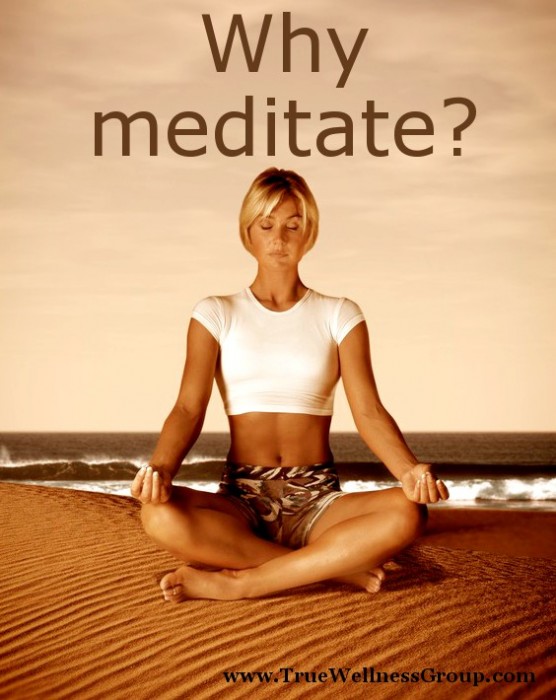 To find relief, some of us jumped on to meditation to relieve stress. Meditation, among other things, does reduce stress, calms the nerves, & relax the body systems, which leaves us feeling refreshed after this exercise. Could the purpose of meditation be to reduce stress?
To find relief, some of us jumped on to meditation to relieve stress. Meditation, among other things, does reduce stress, calms the nerves, & relax the body systems, which leaves us feeling refreshed after this exercise. Could the purpose of meditation be to reduce stress?
Keep in mind meditation has not removed the causes of stress which continue to agitate the mind. So the underlying problem is never resolved- thus an agitated mind cannot take to meditation and draw lasting benefits from the meditation, benefits are only temporary. So we go in cycle from stress to meditation – meditation to stress. Meditation is then reduced to forcing yourself to sit in a quiet place and focusing on an object, place, person, or mantra and it no longer provides the same refreshing feeling that it used too. One day the effect of stress catches up resulting in some sort of a disease and we render the meditation as a useless maddening practice.
How did we miss the very purpose of meditation? Are we practicing meditation after the fact? How can we turn this around?
What is meditation and its ultimate purpose?
Meditation is to practice our intellect to keep our mind on exclusively one & one thing alone. Our intellect must always keep strict observation over our mind & prevent the mind from wandering off into past or future or flowing into multiple thought streams. The best time to practice meditation is at sunrise and sunset. This is when outside nature is calm and supports calmness in you.
However, the practice of meditation just doesn’t end there. Now we bring this practice and apply it all day long at work, at home, with relationships, and in any other situations. It is just like an athlete, who practices & improves his skill on his own, and come game time, he puts his practice to work. So it is with meditation. You must put it to work in the field; the purpose of meditation is not just sitting alone practicing in a room at home. Discover benefits of meditation in part 2 of the meditation series.
If you liked the benefits of this article then the biggest service you can give is by sharing its benefits with others.
Be Well!
Rakesh Sethi
Share your comments, thoughts and suggestions below. I appreciate your time & will take the time to read every single one!

